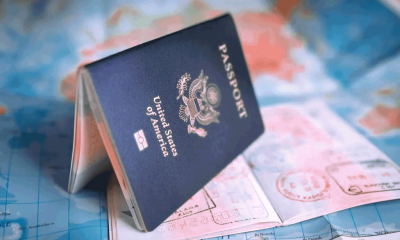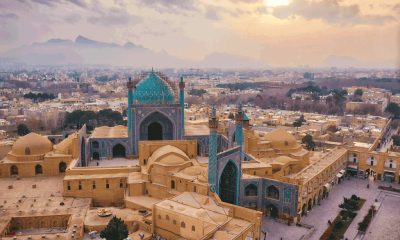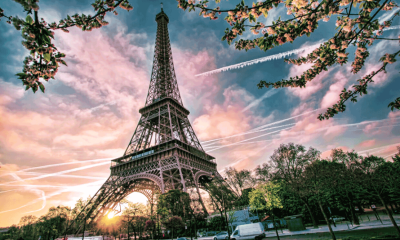Asia
Discover India’s Top 10 Cultural Destinations
Discover the rich tapestry of India’s cultural heritage with our guide to the top 10 cultural destinations. From ancient temples to vibrant festivals, these iconic sites offer a glimpse into India’s diverse traditions and historical legacy. Whether you’re a history enthusiast or a curious traveler, these must-visit locations promise an unforgettable experience steeped in culture and history.
The Iconic Taj Mahal: A Monument of Eternal Love
The Taj Mahal stands as an unrivalled testament to love and architectural brilliance. This magnificent white marble mausoleum, commissioned by Mughal Emperor Shah Jahan in memory of his beloved wife, is a masterpiece that continues to captivate millions of visitors each year. Its stunning symmetry, intricate details, and sheer grandeur make it the crown jewel of Mughal architecture.
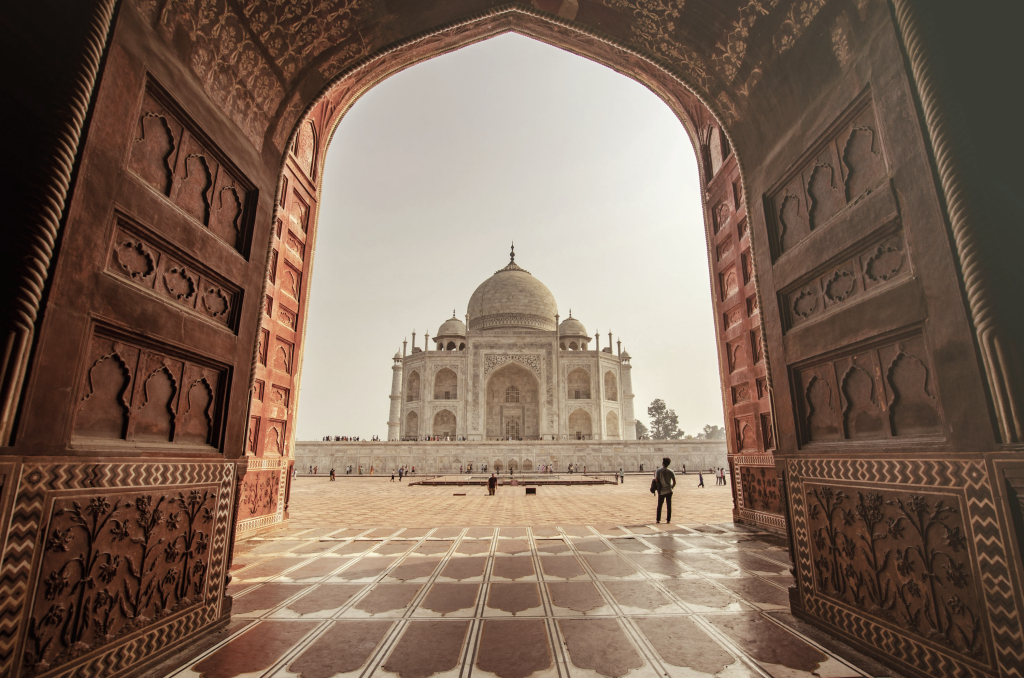
Located in Agra, India, the Taj Mahal is more than just a beautiful building; it’s a symbol of eternal devotion. The nearby Agra Fort, another architectural marvel, offers a glimpse into the opulent lifestyle of the Mughal rulers and provides a stunning view of the Taj Mahal across the Yamuna River.
Recognized as a UNESCO World Heritage Site, the Taj Mahal’s cultural and historical significance cannot be overstated. Its gleaming white marble façade, adorned with precious stones and intricate carvings, is a feat of craftsmanship that has stood the test of time. As you walk through its meticulously manicured gardens and gaze upon its iconic dome, you’ll understand why the Taj Mahal is considered one of the New Seven Wonders of the World.
A visit to the Taj Mahal is not just a journey through history; it’s an experience that will leave you in awe of human creativity and the enduring power of love. Don’t miss the opportunity to witness this architectural wonder and immerse yourself in the rich cultural heritage of India.
Jaipur: The Pink City’s Royal Grandeur
Jaipur, the crown jewel of Rajasthan, beckons with its unparalleled blend of history and modernity. The City Palace stands as a testament to royal opulence, its intricate architecture leaving visitors in awe. Just steps away, the iconic Hawa Mahal’s honeycomb facade whispers tales of a bygone era. No trip to Jaipur is complete without exploring the majestic Amber Fort, where you can ride elephants up the winding path to its grand entrance.
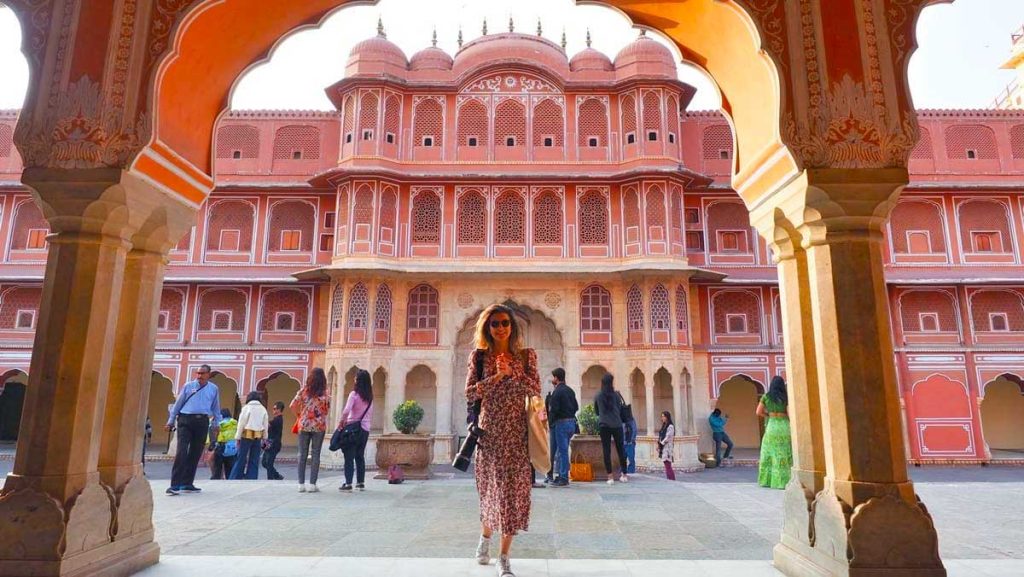
Immerse yourself in vibrant Rajasthani culture as you wander through traditional bazaars, their narrow lanes bursting with colorful textiles, sparkling jeweler, and aromatic spices. The Pink City’s charm lies not just in its monuments, but in the warmth of its people and the richness of its traditions.
From the moment you set foot in Jaipur, you’ll be captivated by its royal grandeur and transported to a world where every corner tells a story. Don’t just visit Jaipur – experience it, breathe it, and let it leave an indelible mark on your soul.
Varanasi: The Spiritual Heart of India
Varanasi, the spiritual epicenter of India, beckons travelers with its unparalleled mystique and profound cultural significance. Nestled along the sacred Ganges River, this ancient city offers an immersive experience unlike any other. The iconic Ghats, stretching along the riverbank, serve as the stage for daily Hindu rituals that have been performed for millennia. As you witness the mesmerizing Ganga Aarti ceremony at dusk, you’ll feel the palpable energy of devotion that permeates the air.
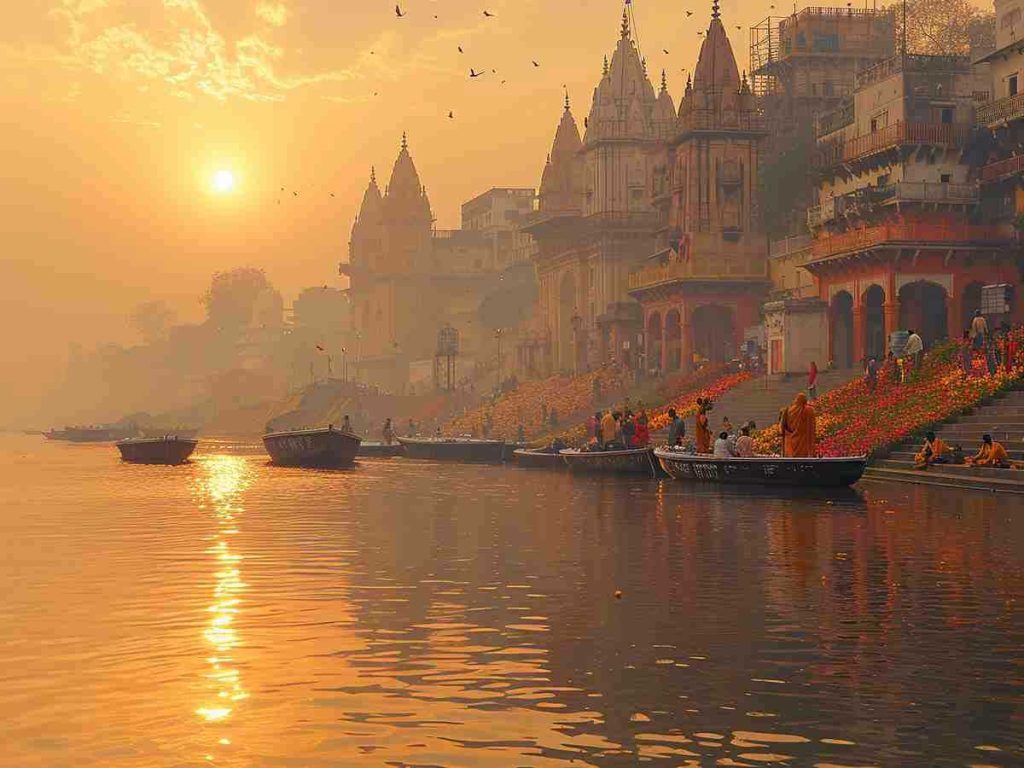
Explore the labyrinth of narrow streets lined with ancient temples, each telling a story of faith and tradition. The Kashi Vishwanath Temple, dedicated to Lord Shiva, stands as a testament to Varanasi’s spiritual importance. Just a short distance away, Sainath, where Buddha delivered his first sermon, adds another layer of historical and religious significance to your journey.
Varanasi isn’t just a destination; it’s a transformative experience that will leave an indelible mark on your soul. From the early morning boat rides on the Ganges to the ethereal atmosphere of its bustling bazaars, every moment in this city is infused with spirituality and wonder. Don’t miss the opportunity to immerse yourself in the heart of India’s spiritual legacy – Varanasi awaits to captivate your senses and enlighten your spirit.
Kerala’s Backwaters: A Serene Cultural Experience
Kerala’s backwaters offer an unparalleled journey into the heart of India’s tropical paradise. Gliding through the tranquil waterways on a traditional houseboat, you’ll witness a way of life unchanged for centuries. Alleppey and Kumarakom, the gateways to this aquatic wonderland, provide the perfect starting point for your adventure.
As you cruise along, you’ll be captivated by the lush landscapes, vibrant birdlife, and the gentle rhythm of village life unfolding on the shores. The houseboats themselves are a marvel, combining rustic charm with modern comforts, ensuring a luxurious experience amidst nature’s bounty.

For those seeking rejuvenation, the backwaters region is renowned for its Ayurvedic treatments. Indulge in age-old healing practices that will leave you feeling refreshed and revitalized. And let’s not forget the culinary delights – Kerala cuisine, with its aromatic spices and fresh seafood, is a feast for the senses.
A backwater cruise is more than just a holiday; it’s an immersion into Kerala’s rich culture and natural beauty. Don’t miss this opportunity to experience one of India’s most enchanting destinations. Book your houseboat adventure today and create memories that will last a lifetime.
Hampi: Ruins of a Forgotten Empire
Step into the mesmerising world of Hampi, where the remnants of the mighty Vijayanagara Empire whisper tales of a glorious past. This UNESCO World Heritage site, nestled amidst a surreal boulder-strewn landscape, offers an unparalleled glimpse into one of India’s most powerful kingdoms. As you wander through the ancient temples and crumbling palaces, you’ll be transported back in time, marveling at the architectural prowess of a civilization that once rivalled Rome in its grandeur.
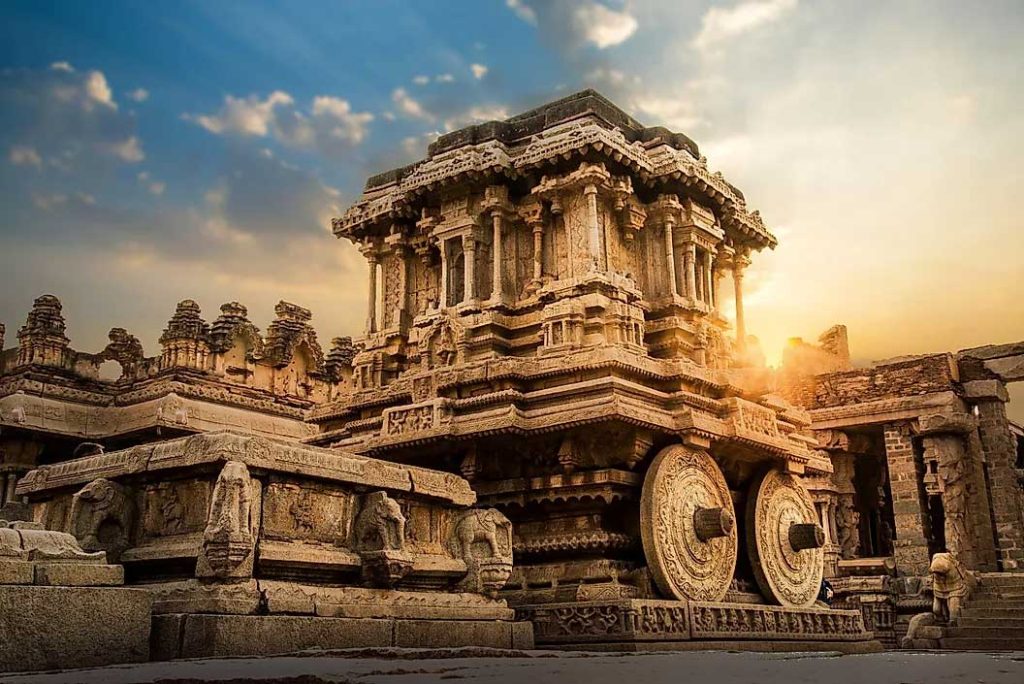
The crown jewel of Hampi, the Vittala Temple, stands as a testament to the empire’s artistic zenith. Its iconic stone chariot and intricately carved pillars will leave you awestruck, wondering at the skill of craftsmen who worked centuries ago. Not to be outdone, the Virupaksha Temple rises majestically against the rocky backdrop, its towering gopuram a beacon of spiritual significance that has withstood the test of time.
Hampi isn’t just a collection of ruins; it’s a living, breathing testament to human ingenuity and the enduring spirit of a forgotten empire. Every stone, every carving, and every temple tells a story waiting to be discovered. Don’t miss the chance to explore this extraordinary destination and immerse yourself in the legacy of the Vijayanagara Empire.
Amritsar: The Golden Heart of Sikhism
Amritsar, the jewel of Punjab, is a city that captivates visitors with its rich history, spiritual significance, and vibrant culture. At its heart lies the magnificent Golden Temple, a beacon of Sikh faith that draws millions of pilgrims and tourists alike. This architectural marvel, with its shimmering gold-plated dome reflected in the surrounding sacred pool, offers a serene and awe-inspiring experience that’s unmatched anywhere else in the world.
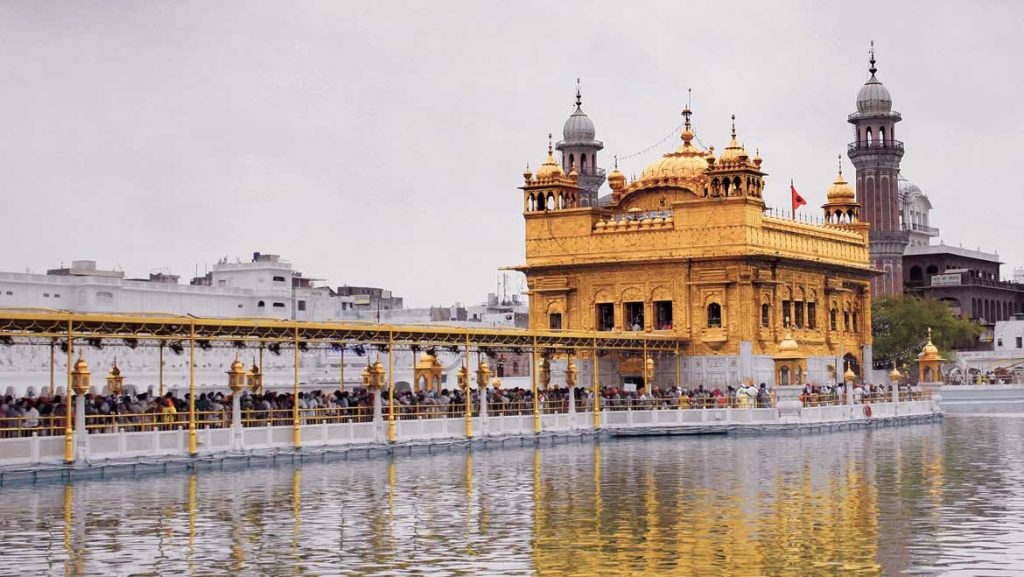
But Amritsar’s allure extends far beyond its spiritual centre. History buffs will find themselves deeply moved by a visit to Jallianwala Bagh, a solemn reminder of India’s struggle for independence. For a taste of patriotic fervour, the daily Wagah Border ceremony showcases a spectacular display of national pride and military precision.
No visit to Amritsar is complete without indulging in its world-famous Punjabi cuisine. From the buttery richness of makki di roti and sarson da saag to the aromatic flavors of Amritsari fish, every meal is a celebration of the region’s culinary heritage.
Amritsar isn’t just a destination; it’s an immersive journey through Sikh history and Punjabi culture. Whether you’re seeking spiritual enlightenment, historical insights, or gastronomic delights, this golden city promises an unforgettable experience that will leave you yearning to return.
Khajuraho: Temples of Love and Devotion
Khajuraho, a testament to India’s rich cultural heritage, stands as an architectural marvel that continues to captivate visitors from around the world. The temples, built during the Chandela dynasty, are renowned for their intricate and often erotic sculptures that adorn their walls. However, to dismiss Khajuraho as merely a collection of sensual art would be a grave injustice to its profound spiritual significance.
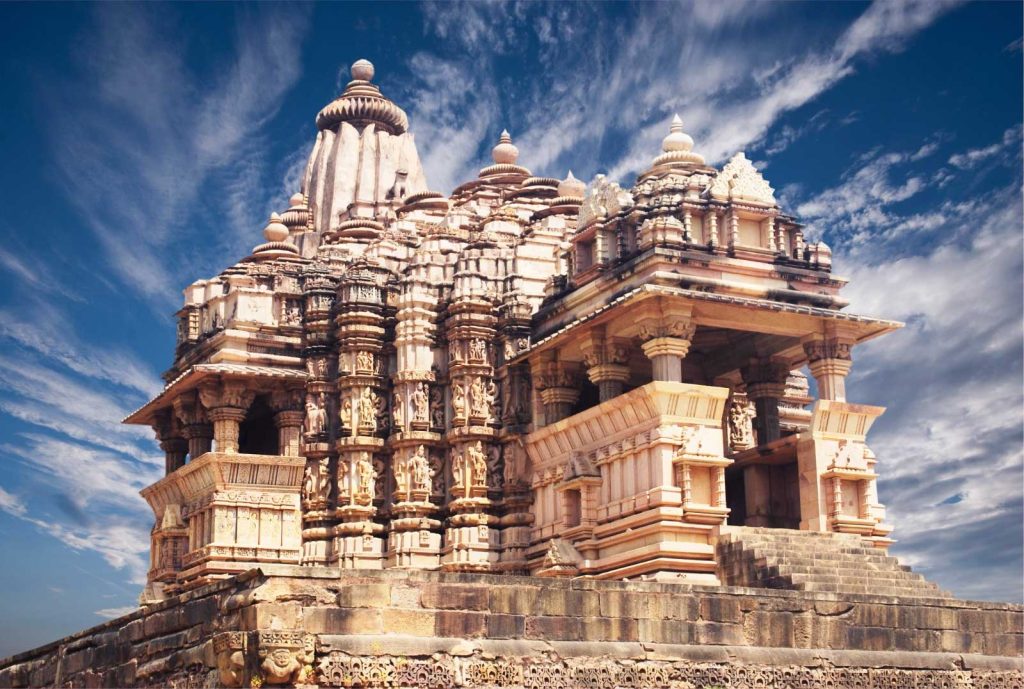
The Western Group of Temples, a UNESCO World Heritage Site, showcases the pinnacle of mediaeval Indian architecture. These structures blend seamlessly with their natural surroundings, creating a harmonious balance between human craftsmanship and divine inspiration. The erotic sculptures, while attention-grabbing, represent only a fraction of the overall artistic narrative. They serve as a reminder of the holistic approach to life and spirituality in ancient Indian philosophy, where human desires were not shunned but integrated into the path of devotion.
As you explore Khajuraho, you’ll discover that these temples are not just about love in its physical form, but also about devotion and spiritual ascension. The exquisite carvings depict various aspects of life, from everyday scenes to mythological tales, offering a comprehensive glimpse into the society that created them. By visiting Khajuraho, you’re not just witnessing an architectural wonder; you’re immersing yourself in a cultural experience that challenges preconceptions and broadens your understanding of India’s rich spiritual heritage.
Udaipur: The Venice of the East
Udaipur, often hailed as the “Venice of the East,” is a mesmerising jewel in India’s crown that will captivate your heart from the moment you arrive. The city’s centrepiece, the ethereal Lake Palace floating on Lake Pichola, is a testament to the grandeur of Rajput architecture and the romantic atmosphere that permeates the entire city. As you explore the majestic City Palace, you’ll be transported back in time, marvelling at the intricate details and rich history etched into every stone.
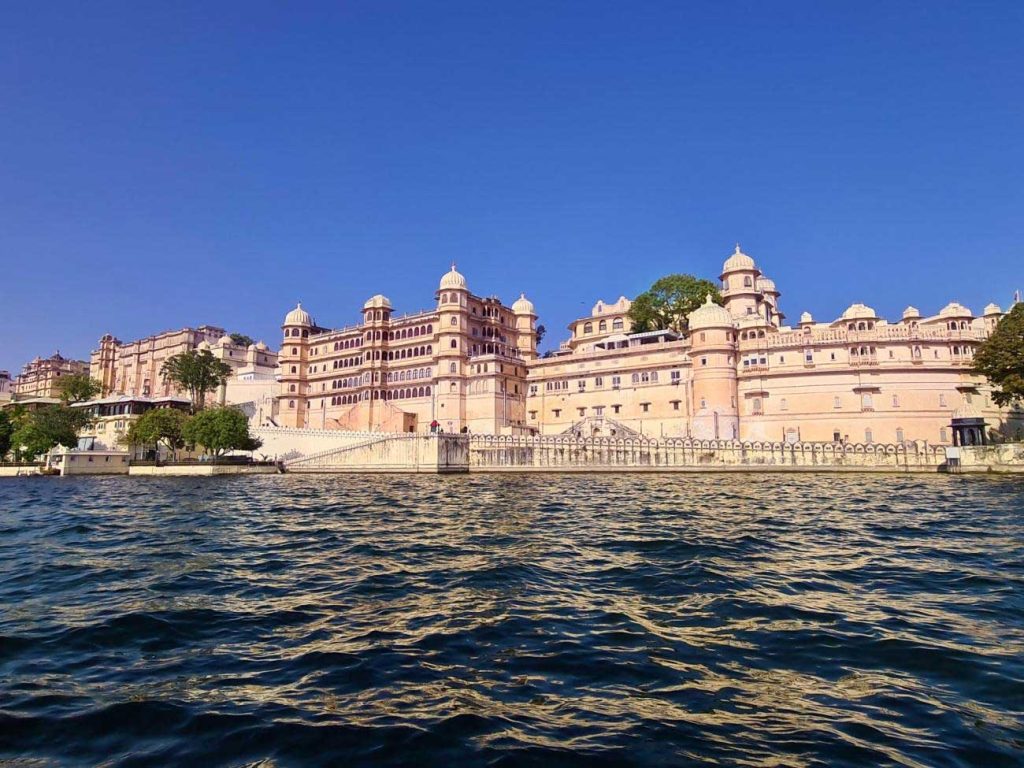
The shimmering waters of Lake Pichola reflect the city’s splendour, creating a dreamlike ambiance that’s simply unmatched. Udaipur’s charm lies not just in its architectural wonders, but in the way it seamlessly blends luxury with tradition, offering an experience that’s both opulent and authentic. Whether you’re seeking a romantic getaway or a cultural adventure, Udaipur promises an unforgettable journey that will leave you yearning to return time and time again.
Mysore: The City of Palaces
Mysore, aptly nicknamed the “City of Palaces,” is a treasure trove of royal heritage and cultural splendour. At its heart stands the magnificent Mysore Palace, a breathtaking example of Indo-Saracenic architecture that will leave you awestruck. This opulent structure truly comes alive during the annual Dasara festival, when thousands of lights illuminate its façade, creating a mesmerising spectacle.
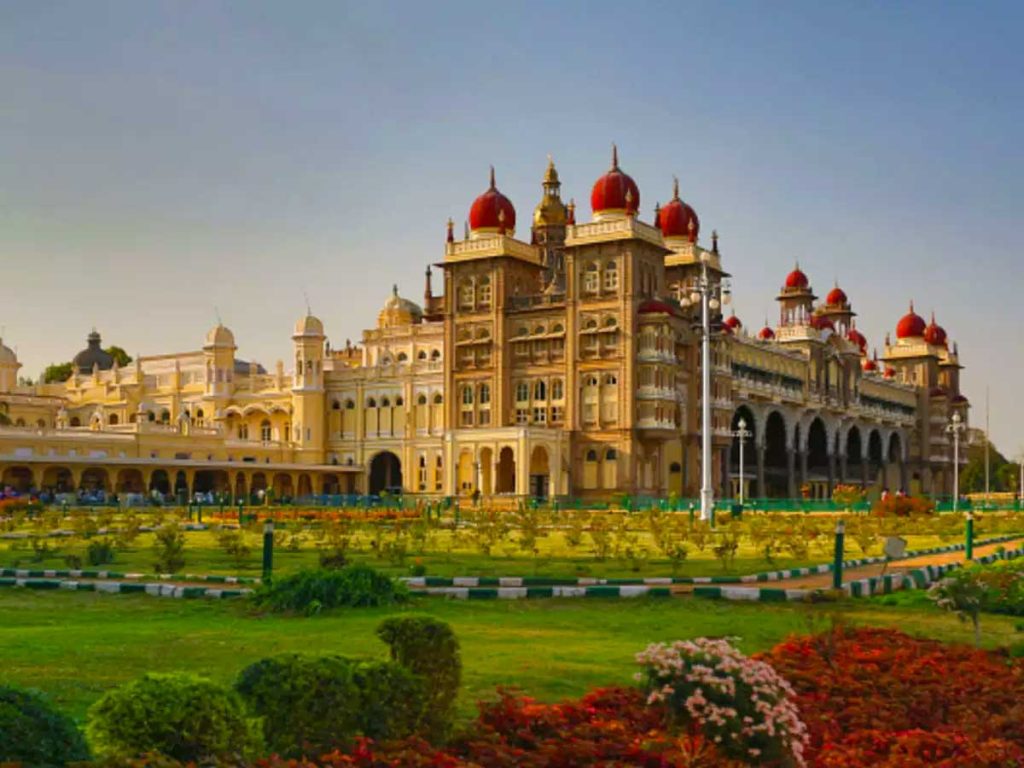
But Mysore’s allure extends far beyond its palaces. The city is renowned for its exquisite silk sarees, woven with intricate designs that reflect centuries of craftsmanship. Equally famous are its aromatic sandalwood products, ranging from soaps to incense, which make for perfect souvenirs.
For those seeking spiritual enlightenment, a visit to Chamundi Hills is a must. This sacred site offers not only religious significance but also panoramic views of the entire city. As you stand atop the hill, gazing at the urban landscape below, you’ll understand why Mysore captivates the hearts of all who visit.
From its regal history to its vibrant culture, Mysore offers an unparalleled experience that will leave you enchanted and yearning to return. Don’t just take our word for it – come and discover the magic of Mysore for yourself!
Kolkata: The Cultural Capital of India
Kolkata, formerly known as Calcutta, stands as the undisputed cultural capital of India. This vibrant metropolis boasts a rich tapestry of history, art, and intellectual prowess that sets it apart from other Indian cities. The iconic Victoria Memorial, a stunning marble edifice, serves as a testament to the city’s colonial past and architectural grandeur. Equally impressive is the Howrah Bridge, an engineering marvel that has become synonymous with Kolkata’s skyline.

But Kolkata’s true essence lies in its intellectual heritage. The city has been the birthplace of countless literary giants, fostering a thriving Bengali literature scene that continues to influence the nation’s cultural landscape. This literary tradition is complemented by the city’s passion for arts, theatre, and music, creating a dynamic cultural ecosystem.
Perhaps nothing encapsulates Kolkata’s cultural spirit more than the annual Durga Puja festival. This grand celebration transforms the entire city into a living, breathing art gallery, showcasing creativity, tradition, and community spirit on an unparalleled scale. It’s during this time that Kolkata’s true colours shine brightest, leaving no doubt about its status as India’s cultural epicentre.
From its intellectual discourse to its artistic expressions, Kolkata offers a unique blend of tradition and modernity that captivates visitors and residents alike. It’s not just a city; it’s a cultural experience that leaves an indelible mark on all who encounter it.
Conclusion: Embark on Your Cultural Odyssey Through India’s Magnificent Heritage
As we conclude our journey through India’s rich tapestry of cultural heritage, it’s clear that this vast and diverse nation offers an unparalleled experience for travellers seeking to immerse themselves in history, art, and tradition. From the awe-inspiring Taj Mahal to the intricate cave paintings of Ajanta, India’s UNESCO World Heritage Sites stand as testaments to human ingenuity and artistic brilliance.
But India’s cultural odyssey extends far beyond these iconic landmarks. It’s in the vibrant festivals that paint cities with colour and joy, in the aromatic spices that tantalise your taste buds, and in the warm smiles of locals eager to share their stories. It’s a journey that engages all your senses and leaves an indelible mark on your soul.
Whether you’re drawn to the spiritual energy of ancient temples, the architectural marvels of forgotten empires, or the living traditions that continue to thrive in bustling markets and quiet villages, India promises a transformative experience. Each visit peels back another layer of this complex and fascinating culture, revealing new wonders and insights.
So, pack your bags, open your mind, and prepare for an adventure like no other. India’s magnificent heritage awaits, ready to captivate, educate, and inspire. Your cultural odyssey begins now – are you ready to embark on this life-changing journey?
Asia
The Ultimate Guide to Exploring Beauty of Bangladesh
Discovering the Beauty and Diversity of Bangladesh
Bangladesh, a South Asian country, has remarkable beauty and a rich cultural heritage. From its vibrant traditions to diverse landscapes, exploring Bangladesh offers an unforgettable experience that captivates the soul. At the heart of Bangladeshi culture lies a blend of ancient history and modern influences, creating a unique tapestry that reflects the nation’s journey through time.
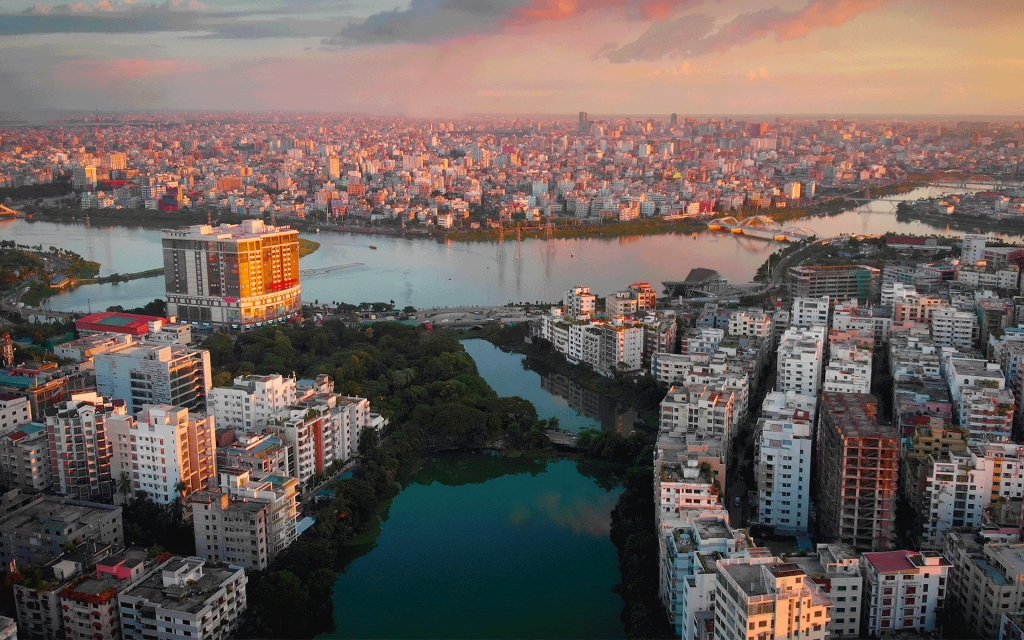
An introduction to Bangladesh reveals a nation steeped in history, with roots tracing back to ancient civilizations. The country’s cultural wealth is evident in its traditional music, dance, and art forms passed down through generations. Festivals like Pohela Boishakh (Bengali New Year) and Durga Puja showcase the community spirit and deep-rooted customs integral to Bangladeshi life.
Exploring Bangladesh also means delving into its natural wonders. The Sundarbans mangrove forest, home to the majestic Bengal tiger, and Cox’s Bazar, boasting one of the longest natural sea beaches in the world, are just glimpses of the country’s diverse landscapes. Each region offers something unique—lush tea gardens in Sylhet or historical landmarks like the ancient city of Paharpur.
Bangladeshi heritage is not only preserved through its monuments but also through everyday life. The warmth and hospitality of its people provide an authentic glimpse into their way of life. Whether wandering through bustling markets or enjoying a traditional meal with locals, you’ll find that every moment spent here adds depth to your understanding of this beautiful nation.
A Rich Cultural Tapestry: Traditions and Festivals in Bangladesh
Bangladesh is a nation steeped in vibrant traditions and rich cultural heritage, where festivals and cultural activities play a pivotal role in the lives of its people. The tapestry of Bangladeshi culture is woven with threads of history, religion, and community spirit, making it a fascinating subject for anyone interested in the diverse customs of South Asia.
One of the most prominent Bangladesh traditions is Pahela Baishakh, the Bengali New Year. Celebrated on April 14th, this festival marks the first day of the Bengali calendar. People from all walks come together to enjoy colorful processions, traditional music and dance performances, and various local delicacies. The festival embodies the essence of Bengali culture—joyous communal participation and deep-rooted artistic expression.
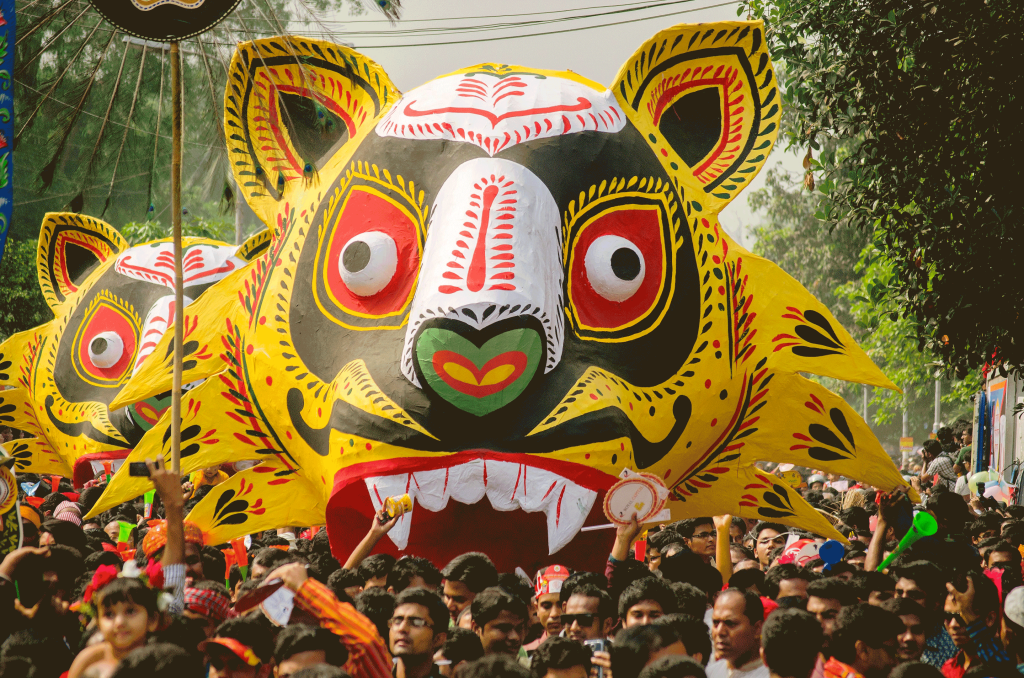
Another significant event is Durga Puja, a major Hindu festival that honors Goddess Durga. This multi-day celebration involves elaborate rituals, beautifully crafted idols, and community gatherings highlighting religious devotion and artistic craftsmanship. In cities like Dhaka and Chittagong, pandals (temporary structures) are set up to showcase intricate decorations that attract visitors from all over.
Eid-ul-Fitr and Eid-ul-Adha are two crucial Islamic festivals celebrated wildly across Bangladesh. These events mark critical religious observances and feature communal prayers, feasting, charity work (Zakat), and family gatherings. They serve as occasions for reinforcing social bonds within the Muslim community.
In addition to these major festivals, Bangladesh hosts numerous regional fairs known as “melas,” which celebrate everything from local crafts to agricultural produce. These meals are integral to cultural activities in Bangladesh as they offer platforms for artisans to display their skills while fostering economic activities within rural communities.
Top Tourist Attractions You Must Visit in Bangladesh
Bangladesh has a rich cultural heritage, stunning landscapes, and historical significance. For travelers seeking unique experiences, the country offers many tourist attractions that will leave lasting impressions. Here are some top tourist attractions in Bangladesh you must visit:
Sundarbans Mangrove Forest: As the largest mangrove forest in the world and a UNESCO World Heritage Site, the Sundarbans is home to the majestic Bengal tiger. It’s an ideal travel destination for nature enthusiasts who enjoy wildlife and tranquil surroundings.
Cox’s Bazar: Known for having the longest natural sea beach in the world, Cox’s Bazar is one of the best places for beach lovers to visit in Bangladesh. The serene coastline stretches over 120 kilometers and offers breathtaking sunsets.
Srimangal: Often called the “Tea Capital of Bangladesh,” Srimangal is famous for its lush tea gardens, rolling hills, and vibrant biodiversity. It’s a perfect spot for relaxing in nature’s lap.
Historical Sites in Dhaka: The capital city of Dhaka boasts several significant sightseeing spots, such as Lalbagh Fort, Ahsan Manzil (Pink Palace), and Liberation War Museum. These sites offer deep insights into Bangladesh’s history and culture.
Sylhet: Nestled among picturesque hills and rivers, Sylhet is another gem among travel destinations in Bangladesh. It’s known for its spiritual significance, and numerous shrines like Hazrat Shah Jalal Mazar Sharif attract pilgrims worldwide.
Rangamati: Located within the Chittagong Hill Tracts, Rangamati offers stunning landscapes, with lakes such as Kaptai Lake being prominent attractions. It’s an excellent place for boating, hiking, and experiencing indigenous cultures.
Exploring these tourist attractions in Bangladesh provides visual delight and an enriching cultural experience that reflects the country’s diverse heritage and natural beauty.
Culinary Delights: A Guide to Bangladeshi Cuisine
Bangladesh, a country known for its rich cultural heritage, offers a culinary landscape that is both diverse and deeply rooted in tradition. This Bangladeshi food guide aims to introduce you to Bangladesh’s vibrant flavors and traditional dishes that have been cherished for generations.
One of the most iconic aspects of Bengali cuisine is its use of spices. Traditional dishes of Bangladesh often feature a harmonious blend of turmeric, cumin, coriander, and mustard seeds, creating layers of complex flavors. A staple in many households is “Bhuna Khichuri,” a comforting dish from rice and lentils cooked with aromatic spices and often accompanied by fried hilsa fish or eggplant fritters.
In the bustling capital city of Dhaka, street food culture thrives with popular foods that are both affordable and delectable. Among these are “Fuchka” (Pani Puri), crispy hollow spheres filled with spicy tamarind water, chickpeas, and potatoes – a must-try for any visitor. Another beloved street food is “Chotpoti,” which consists of peas served with boiled eggs, potatoes, tamarind sauce, and various spices.
For those seeking heartier fare, “Kacchi Biryani” is a quintessential Bangladeshi dish. This fragrant rice dish is cooked with marinated mutton or chicken layered between aromatic basmati rice seasoned with saffron and ghee. The slow-cooking process ensures that every bite is infused with flavor.
As you explore Bengali cuisine further, don’t miss out on sweet treats like “Rasgulla” – soft cheese balls soaked in sugary syrup – or “Mishti Doi,” a traditional sweetened yogurt that offers a perfect ending to any meal.
Whether sampling popular foods in Dhaka’s vibrant markets or indulging in home-cooked traditional dishes of Bangladesh, each bite promises to be an unforgettable experience steeped in history and flavor.
Navigating Through the Cities: Transport and Travel Tips for Tourists
Traveling around Bangladesh can be an exhilarating experience, but navigating its bustling cities requires some preparation. Dhaka, the capital city, is known for its vibrant atmosphere and dense traffic. Understanding the nuances of transportation in Dhaka is crucial for any tourist aiming to make the most of their visit.
One of the most popular modes of transportation in Dhaka is the rickshaw. These three-wheeled, pedal-powered vehicles are ideal for short distances and provide a unique way to experience the city’s lively streets. However, agreeing on a fare with the driver before starting your journey is advisable to avoid any misunderstandings.
CNG auto-rickshaws and taxis are more convenient options for longer distances within Dhaka or when traveling between cities. CNGs (Compressed Natural Gas vehicles) are faster than rickshaws but still relatively economical. Taxis offer a more comfortable ride, especially during hot weather or heavy rain.
Public buses are another option for tourists who want to travel like locals. Although they can be crowded and sometimes challenging to navigate due to language barriers, they offer an authentic glimpse into daily life in Bangladesh. Ride-sharing apps like Uber have become increasingly popular for those looking for comfort and convenience.
Trains can be an excellent choice when planning trips outside Dhaka or exploring other parts of Bangladesh. The railway network connects major cities and offers various classes of service, from basic seating to air-conditioned compartments. Trains provide a scenic way to see the countryside while avoiding road traffic.
Lastly, domestic flights are available for tourists who wish to travel quickly between distant locations within Bangladesh. Major airlines operate regular flights connecting Dhaka with cities like Chittagong, Sylhet, and Cox’s Bazar.
By familiarizing yourself with these transportation options and planning accordingly, you can easily navigate through Dhaka and beyond—making your trip both enjoyable and memorable.
Embrace the Wonders of Bangladesh on Your Next Adventure!
Bangladesh, a country rich in history, culture, and natural beauty, offers an array of experiences that cater to every type of traveler. From the bustling streets of Dhaka to the serene landscapes of the Sundarbans mangrove forest, this South Asian gem promises unforgettable adventures.
For history enthusiasts, ancient cities like Mahasthangarh and Paharpur provide a glimpse into the country’s storied past. Nature lovers will find solace in the lush greenery of Srimangal’s tea gardens or the tranquil beaches of Cox’s Bazar. The diverse wildlife in places like Lawachara National Park and Ratargul Swamp Forest will captivate any visitor.
Moreover, Bangladesh’s vibrant culture is evident in its festivals, cuisine, and warm hospitality. Whether exploring local markets or savoring traditional dishes like biryani and pitha, you’ll discover a unique blend of flavors and traditions.
Asia
Discover Japan with the Ultimate Japan Tour Guide
Why You Need a Comprehensive Japan Tour Guide for Your Trip
Planning a trip to Japan can be both exciting and overwhelming. A comprehensive Japan tour guide is invaluable for navigating this unique and diverse country. With such a resource, you can streamline your Japan travel planning, ensuring you don’t miss out on must-see attractions and hidden gems.
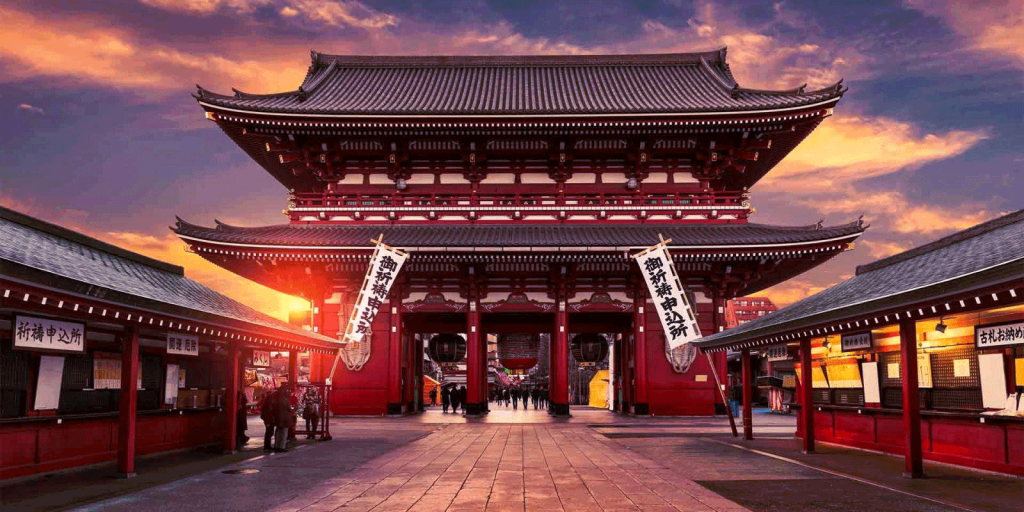
A well-crafted Japan travel itinerary will help you make the most of your time, whether you’re exploring the bustling streets of Tokyo or the serene temples of Kyoto. Guided tours in Japan offer insider knowledge beyond what you’ll find in standard travel tips for Japan. They provide context and history, enriching your experience.
Top Must-Visit Destinations in Japan
Exploring Japan offers a blend of traditional and modern experiences that are hard to find elsewhere. Tokyo attractions, for instance, cater to tech enthusiasts and culture buffs alike. There’s something for everyone from the bustling Shibuya Crossing to the serene Meiji Shrine.
Kyoto temples are a must-see. The golden Kinkaku-ji and the sprawling Fushimi Inari-taisha with its iconic red torii gates provide glimpses into Japan’s rich history and spiritual heritage. Each temple visit feels like stepping back in time.
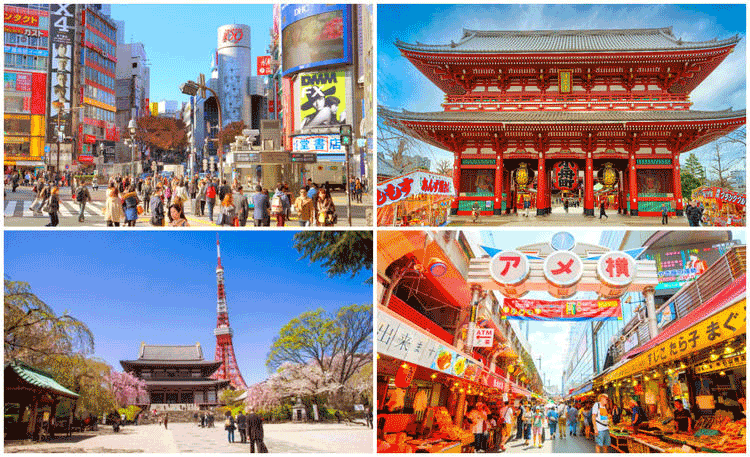
Osaka food tours are legendary. Known as Japan’s kitchen, Osaka tempts you with street foods like takoyaki (octopus balls) and okonomiyaki (savory pancakes). It’s a culinary adventure you won’t want to miss.
For nature lovers, Hokkaido nature spots offer breathtaking landscapes all year round. Whether it’s the flower fields of Furano in summer or the powdery snow of Niseko in winter, Hokkaido showcases Japan’s natural beauty at its finest.
These must-see places in Japan promise diverse experiences that leave lasting memories. Whether you’re drawn by urban excitement or tranquil retreats, Japan has it all waiting for you.
Cultural Etiquette and Tips for Traveling in Japan
Traveling to Japan offers a unique and enriching experience, but understanding Japanese customs for tourists is essential to ensure a respectful visit. Here are some etiquette tips for navigating the cultural landscape:
Bowing: A simple bow is a common greeting. It’s respectful and shows gratitude or acknowledgment.
Shoes Off: Always remove your shoes when entering someone’s home, certain traditional accommodations, and even some temples.
Quiet in Public Spaces: Japanese culture values harmony and quietness in public areas like trains and buses. Keep conversations low-key.
Cash is King: Though credit cards are becoming more accepted, carrying cash is advisable as many places still prefer it.
No Tipping: Unlike many Western countries, tipping can be seen as rude or unnecessary in Japan.
Understanding these do’s and don’ts in Japan will help you blend seamlessly into the local culture while showing respect for their traditions.
The Best Time to Visit Japan: Season-by-Season Breakdown
When planning a trip to Japan, timing is everything. Each season offers unique experiences that cater to different interests.
Spring, particularly late March to early April, is synonymous with cherry blossom season tours. Tokyo and Kyoto transform into picturesque landscapes filled with pink blooms. This period is perfect for those who want to witness Japan’s iconic Sakura in full bloom.
Summer can be hot and humid, but it’s also festival season. Cities like Tokyo buzz with energy during events such as the Sumida River Fireworks Festival. If you can handle the heat, this time offers vibrant cultural experiences and lively street scenes.
Autumn brings cooler temperatures and stunning fall foliage. From mid-October to early December, places like Nikko and Kyoto showcase brilliant reds and oranges. This season provides a serene backdrop for exploring temples and gardens.
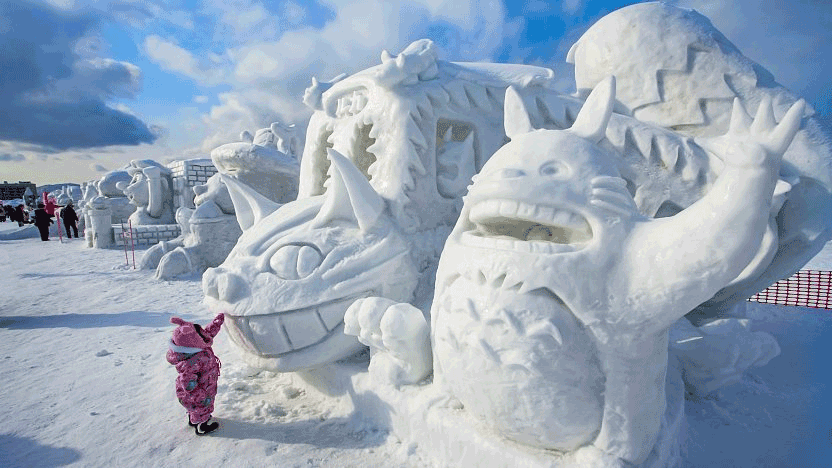
Winter transforms Hokkaido into a winter wonderland with its famous winter festivals in Sapporo. Skiing enthusiasts will find excellent conditions in resorts like Niseko from December through February.
Choosing the best time to visit Japan depends on what you want to experience. Whether it’s cherry blossoms in spring or winter festivals in Hokkaido, each season has something special to offer.
Savoring Japanese Cuisine: A Culinary Adventure Awaits
Embark on a culinary journey that promises to delight your taste buds and expand your gastronomic horizons. Begin with a sushi-tasting tour in Tokyo, where master chefs craft each piece with precision and artistry. The freshness of the fish, the perfect balance of rice, and the subtlety of flavors will leave you craving more.
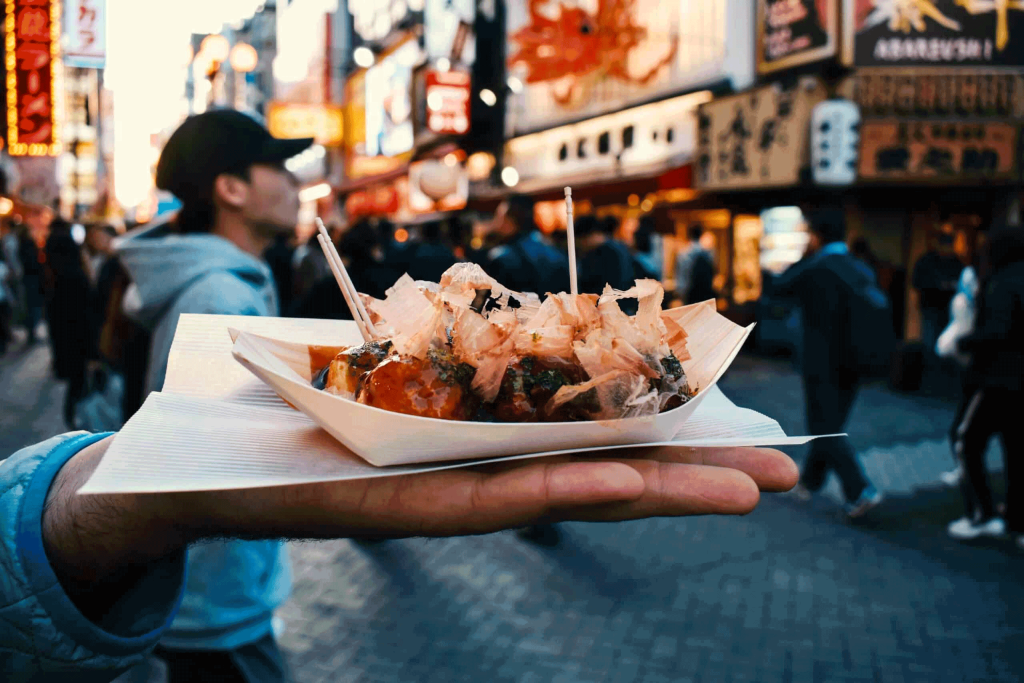
Next, head to Kyoto’s ramen shops. Here, you’ll discover bowls of steaming noodles immersed in rich broths that have simmered for hours. From shoyu to tonkatsu, each variety offers a unique experience that’s deeply rooted in tradition yet bursting with innovation.
Take advantage of Osaka’s vibrant street food scene. An Osaka street food guide will lead you through bustling markets where you can savor takoyaki—crispy octopus balls—or okonomiyaki, a savory pancake loaded with toppings. The energy is palpable as vendors skillfully prepare these dishes right before your eyes.
These Japanese culinary experiences are more than just meals; they’re an exploration of culture and history through flavor. Whether you’re a seasoned foodie or new to Japanese cuisine, this adventure promises unforgettable tastes and memories.
Navigating Transportation in Japan: From Shinkansen to Local Buses
Navigating Japan’s transportation network can seem daunting, but with some practical tips, it becomes manageable and even enjoyable. When traveling by train in Japan, tips like understanding the difference between Shinkansen (bullet trains) and local trains are essential. The Shinkansen offers speed and efficiency for long distances, while regional trains provide access to smaller towns.
Comparing trains vs buses in Japan reveals that trains generally offer a faster and more straightforward way to travel between major cities. However, buses can be more economical for shorter distances or routes not covered by rail.
A key resource is the Japan Rail Pass guide. This pass is invaluable for tourists planning extensive travel within a set period. It allows unlimited use of JR trains, including some Shinkansen lines, which is ideal for exploring multiple regions.
For everyday journeys, Japanese public transport tips include purchasing an IC card like Suica or Pasmo. These cards simplify payments across various transport modes without needing separate tickets each time you board a bus or train.
Packing Essentials for Your Japanese Adventure
When planning your Japanese adventure, packing smartly is crucial to ensure a smooth trip. Understanding the essentials for Japan’s diverse weather and knowing what to pack can make all the difference.
Firstly, consider Japan’s varied climate. If you’re visiting in spring or autumn, pack layers: lightweight sweaters and a good jacket are key. Summer demands light clothing and plenty of sun protection—think hats and sunscreen. Winter travelers should focus on warm coats, thermal wear, and waterproof boots for snowy regions.
Power adapters are another must-have. Japan uses Type A plugs with 100-volt electricity. Ensure your electronics are compatible, or bring a reliable power adapter to keep your devices charged.
Choosing the best luggage is also vital for navigating Japan’s efficient but sometimes crowded public transport system. Opt for lightweight, durable suitcases with smooth wheels; they’re easier to handle on trains and buses. A small backpack or daypack will be invaluable for daily excursions.
Asia
Discover Bangkok: The Ultimate Travel Guide to Thailand’s Vibrant Capital
Why Bangkok Should Be Your Next Travel Destination
Bangkok, the bustling capital of Thailand, is a city that effortlessly blends the old with the new, making it an irresistible destination for travellers. From its ornate temples and vibrant street markets to its modern shopping malls and dynamic nightlife, there are countless reasons why Bangkok should be your next travel destination.
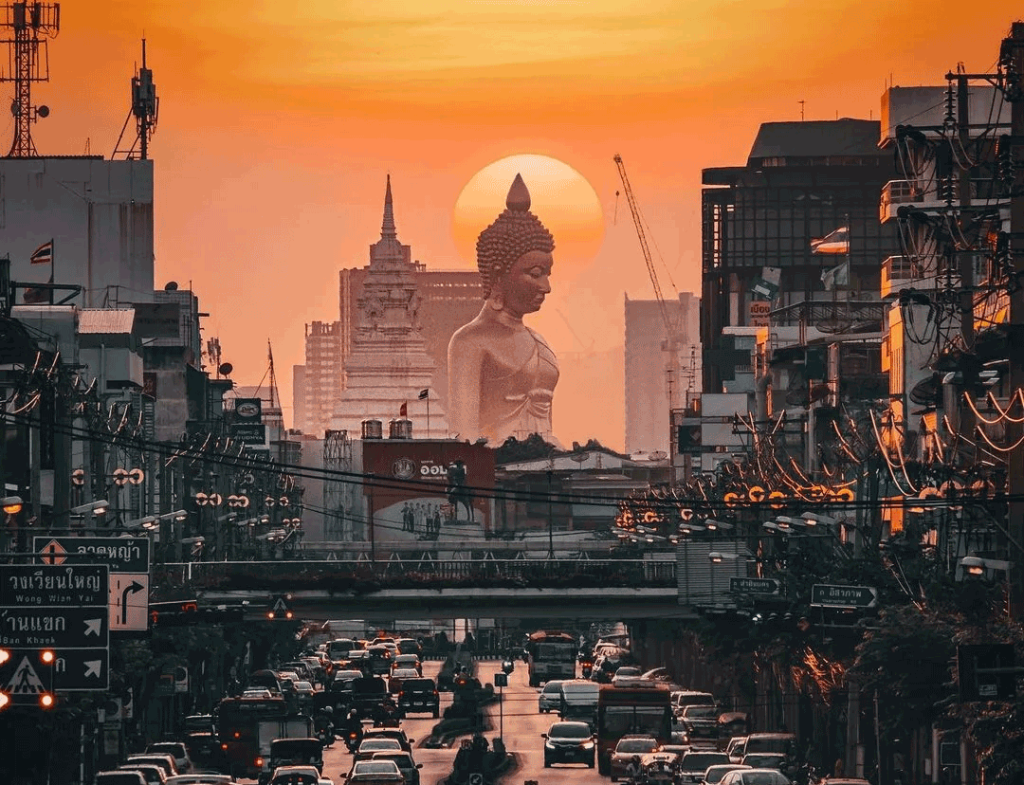
First and foremost, discover Bangkok’s rich cultural heritage by visiting iconic landmarks such as the Grand Palace and Wat Pho. These historical sites offer a glimpse into Thailand’s royal past and are adorned with intricate architectural details that captivate visitors.
For those seeking a more contemporary experience, Bangkok’s shopping scene is unparalleled. The city boasts everything from high-end luxury malls like Siam Paragon to bustling street markets such as Chatuchak Weekend Market. Whether you’re hunting for designer goods or unique local crafts, this travel guide to Bangkok will lead you to endless shopping opportunities.
Food lovers will find themselves in paradise as they explore Bangkok’s culinary landscape. Street food stalls serve up mouth-watering dishes like Pad Thai and Mango Sticky Rice at incredibly affordable prices. For a more upscale dining experience, the city offers numerous fine-dining restaurants that fuse traditional Thai flavours with modern culinary techniques.
The reasons to visit Thailand’s capital extend beyond its attractions; it’s also about the experiences you’ll have interacting with locals who embody the country’s renowned hospitality. Engaging with friendly residents can provide deeper insights into Thai culture and make your trip even more memorable.
Top Attractions You Must See in Bangkok
Bangkok, the vibrant capital of Thailand, is a city teeming with history, culture, and a plethora of attractions that beckon travellers from around the globe. When visiting this bustling metropolis, several must-see places should be at the top of your itinerary.

First and foremost is the Grand Palace. This iconic landmark has been the heart of Bangkok since 1782 and served as the royal residence for generations. The Grand Palace complex houses intricate buildings adorned with stunning architecture and exquisite details. It’s not just a historical site but also a symbol of Thailand’s rich heritage.
Next on the list is Wat Arun, also known as the Temple of Dawn. Located on the west bank of the Chao Phraya River, Wat Arun stands majestically with its towering spires that glisten in sunlight. This temple is exceptionally breathtaking at sunset when it casts an ethereal glow over Bangkok’s skyline.
Another essential stop is Wat Pho, home to the famous Reclining Buddha statue. This temple complex offers more than just spiritual enlightenment; it’s also renowned for being one of Thailand’s premier massage schools. Visitors can explore its serene courtyards and marvel at over 1,000 Buddha images scattered throughout.
A visit to Bangkok would only be complete with experiencing its floating markets. These markets offer a unique glimpse into traditional Thai life, where vendors sell fresh produce and local delicacies from boats along narrow canals. Among them, the Damnoen Saduak Floating Market remains one of the most popular places for tourists seeking an authentic shopping experience on the water.
Each of these Bangkok attractions provides a distinct window into Thailand’s cultural tapestry, making them indispensable stops for any traveller aiming to immerse themselves fully in this dynamic city’s allure.
Culinary Delights: Exploring the Best Street Food and Restaurants in Bangkok
When it comes to culinary delights, Bangkok stands out as a paradise for food lovers. The city offers an eclectic mix of street food and high-end dining experiences that cater to every palate. Exploring Bangkok’s street food is an adventure in itself. From the bustling streets of Yaowarat (Chinatown) to the vibrant stalls of Khao San Road, the options are endless. Must-try dishes include Pad Thai, Som Tum (papaya salad), and Moo Ping (grilled pork skewers). These iconic foods not only capture the essence of Thai cuisine but also provide a glimpse into the daily life of Bangkok’s locals.
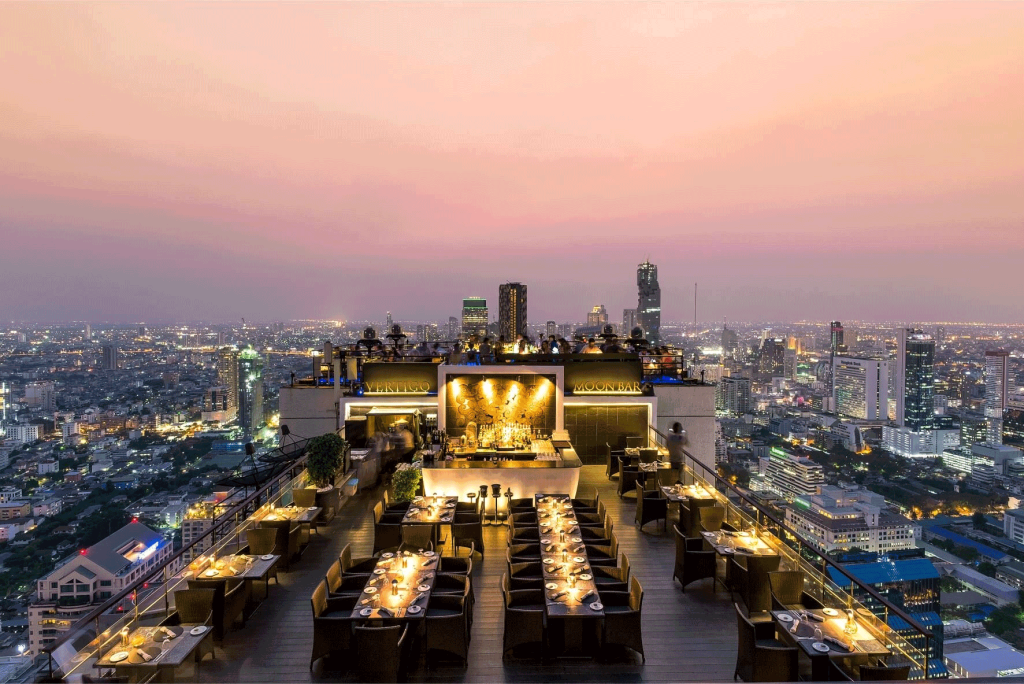
For those seeking a more refined dining experience, Bangkok boasts some of the best restaurants in Asia. Sühring offers modern German cuisine with a touch of Thai influence, while Gaggan Anand serves progressive Indian dishes that have earned global acclaim. For authentic Thai cuisine in an upscale setting, Bo. Lan and Nahm are top choices that showcase traditional recipes with contemporary twists.
Whether you’re indulging in street food or dining at Michelin-starred restaurants, knowing where to eat in Bangkok can elevate your culinary journey. The city’s dynamic food scene promises an unforgettable gastronomic experience that reflects its rich cultural heritage and innovative spirit.
The Best Shopping Destinations in Bangkok for All Budgets
Bangkok, Thailand’s bustling capital, is a paradise for shoppers of all budgets. Whether you’re hunting for high-end brands or seeking unique bargains, the city offers a diverse range of shopping experiences that cater to every pocket.
One of the most iconic spots for budget shopping in Bangkok is Chatuchak Market. Known as one of the largest weekend markets in the world, Chatuchak boasts over 15,000 stalls selling everything from clothing and accessories to home decor and antiques. It’s an ideal destination for those looking to experience local culture while snagging great deals.
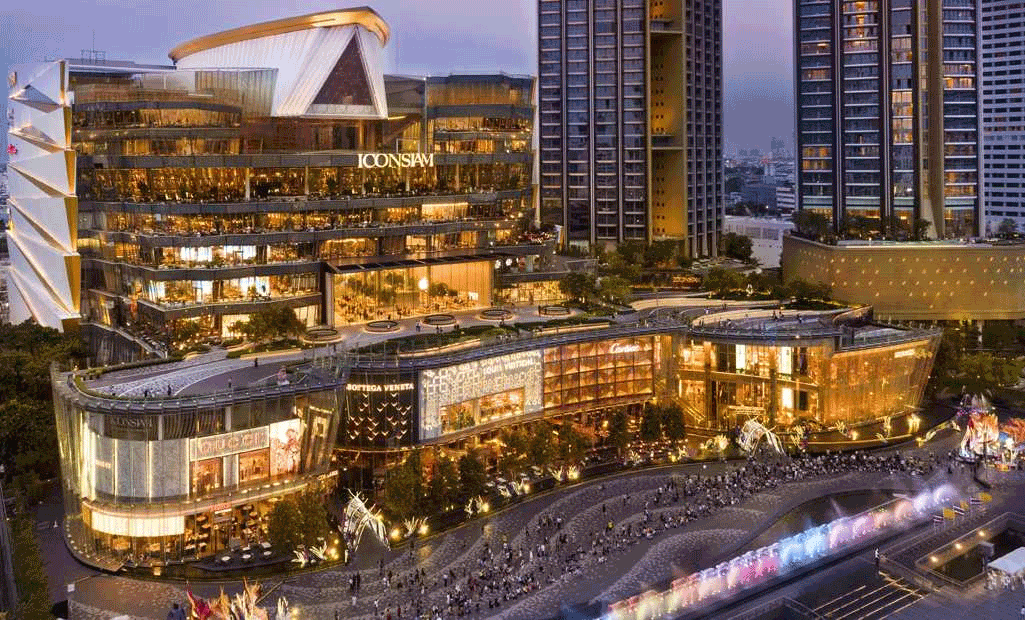
For those with a taste for luxury, Siam Paragon Mall stands out as a premier shopping destination. Located in the heart of Bangkok, this upscale mall features an array of high-end international brands, fine-dining restaurants, and even an aquarium. It’s perfect for shoppers who are looking to indulge in some retail therapy amidst opulent surroundings.
Whether you’re on a tight budget or ready to splurge, shopping in Bangkok offers something for everyone. From the vibrant chaos of Chatuchak Market to the sophisticated elegance of Siam Paragon Mall, Thailand’s capital ensures that every shopper leaves satisfied and eager to return.
Navigating Transportation: How to Get Around Efficiently in the City of Angels
Bangkok, often referred to as the “City of Angels,” offers a variety of transportation options that cater to both locals and tourists. Understanding these modes can significantly enhance your experience and efficiency when getting around Bangkok.
One of the most popular and convenient ways to navigate the city is via the BTS Skytrain. This elevated train system covers major commercial areas, making it an ideal choice for avoiding traffic congestion. The BTS Skytrain is known for its punctuality, cleanliness, and air-conditioned comfort, which provides a respite from Bangkok’s tropical heat.
For those looking for a more traditional experience, tuk-tuks offer an iconic way to travel short distances. These three-wheeled vehicles are not only fun but also provide a quick means to manoeuvre through narrow streets and busy markets. However, it’s advisable to agree on a fare before starting your journey to avoid any misunderstandings.
Taxis are another reliable option for getting around Bangkok. They are relatively inexpensive compared to Western standards and can be hailed easily on most streets or booked through various apps. Most taxis are metered; however, during peak hours or heavy rain, drivers might negotiate fares instead.
Each mode of transportation in Bangkok has its own set of advantages depending on your needs—whether it’s speed, comfort, or experiencing local culture. By familiarizing yourself with these options—BTS Skytrain for efficiency, tuk-tuks for short trips and cultural immersion, and taxis for door-to-door convenience—you can navigate this bustling metropolis with ease.
Cultural Etiquette: Do’s and Don’ts When Visiting Buddhist Temples and Local Markets
When visiting Thailand, understanding cultural etiquette is crucial for a respectful and enriching experience. This is particularly important when exploring Buddhist temples and local markets. Here are some essential dos and don’ts to keep in mind.
Buddhist Temple Etiquette
Do’s:
Dress Modestly: Wear clothing that covers your shoulders and knees. This shows respect for the sacredness of the temple.
Remove Footwear: Always take off your shoes before entering a temple building.
Be Quiet: Speak softly to maintain the peaceful atmosphere of the temple grounds.
Show Respect to Buddha Images: Treat all Buddha images with great respect; avoid touching or climbing on them.
Don’ts:
Avoid Pointing Feet: Never point your feet at Buddha images or monks, as feet are considered the least sacred part of the body.
Refrain from Public Displays of Affection: Holding hands or kissing within temple grounds is inappropriate.
Don’t Touch Monks if You’re Female: Women should not touch monks, as it is against monastic rules.
Local Market Customs
Do’s:
Bargain Politely: Haggling is common, but always do so with a smile and friendly demeanour.
Respect Personal Space: Thai people value personal space; be mindful not to stand too close when interacting with vendors.
Use Both Hands When Paying: When handing money to someone, use both hands as a sign of respect.
Don’ts:
Avoid Touching Produce Without Permission: Always ask before handling food items at stalls to prevent offending vendors.
Don’t Raise Your Voice: Even during negotiations, keep your tone calm and composed.
Refrain from Pointing Fingers Directly at People or Objects: Use an open hand gesture instead, as pointing can be seen as rude.
By following these tips for travellers on Buddhist temple etiquette and local market customs in Thailand, you’ll ensure that your visit is respectful and enjoyable for both you and the locals you encounter along the way.
The Best Times of Year to Visit and Experience Festivals Unique to the City
When planning a trip to Bangkok, timing can significantly enhance your experience, mainly if you aim to immerse yourself in the city’s vibrant festivals. Understanding the best times to visit and the unique celebrations you can witness is crucial for an unforgettable journey.
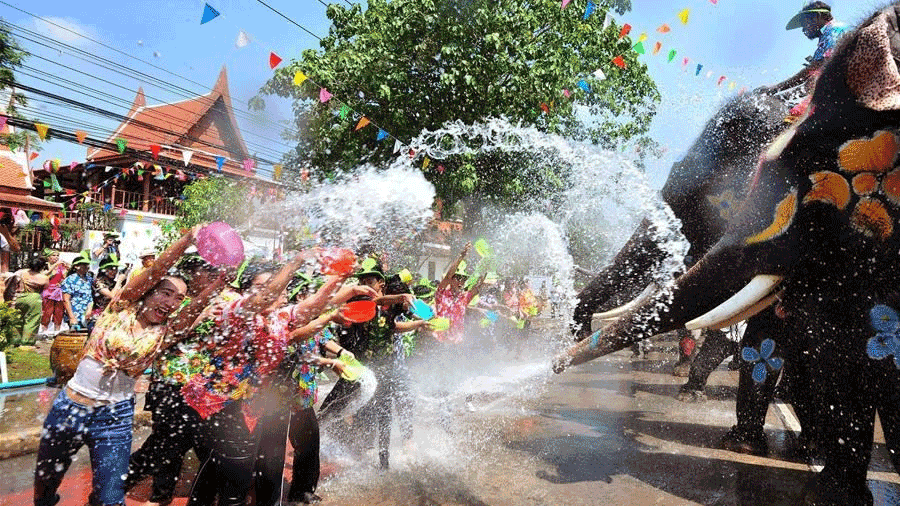
One of the prime times to visit Bangkok is during April when the city comes alive with the Songkran Festival. This Thai New Year celebration transforms Bangkok into a massive water fight arena, symbolizing purification and the washing away of sins. The weather in April is typically hot and humid, but the refreshing water festivities provide a delightful way to cool down.
Another exceptional time to experience Bangkok’s cultural richness is during November for Loi Krathong. This festival of lights involves floating intricately decorated baskets on water bodies as an offering to river spirits. The sight of thousands of glowing krathongs drifting on rivers and canals against the backdrop of fireworks creates a magical atmosphere that shouldn’t be missed.
Additionally, December and January are excellent months for visiting due to favourable weather conditions—cooler temperatures and lower humidity make exploring more comfortable. During this period, you can also partake in New Year celebrations that blend traditional Thai customs with international festivities, offering a unique cultural fusion.
In summary, while each season offers its charm, aligning your visit with these festivals—Songkran in April, Loi Krathong in November, and New Year celebrations in December—will provide enriching experiences that showcase Bangkok’s rich cultural tapestry.
-
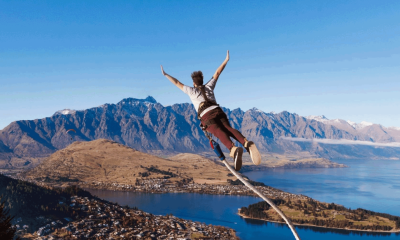
 Africa9 months ago
Africa9 months agoAdventure Travel: Top Destinations for Thrill Seekers That Will Take Your Breath Away
-
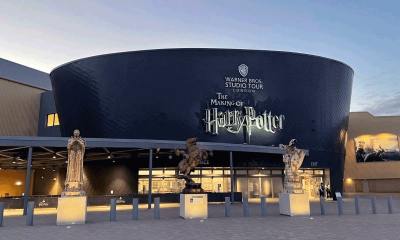
 Europe9 months ago
Europe9 months agoUnveiling the Magic: Why Warner Bros Studio Tour London is a Must-Visit for Harry Potter Fans
-

 Africa9 months ago
Africa9 months agoWhy Nairobi is the Safari Capital of the World
-
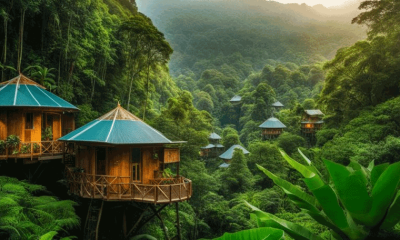
 Asia9 months ago
Asia9 months agoSustainable Travel: 10 Eco-Friendly Destinations That Will Inspire Your Next Adventure
-

 Africa9 months ago
Africa9 months agoSeasonal Travel Guide: Unlock the Best Destinations for Every Time of Year
-
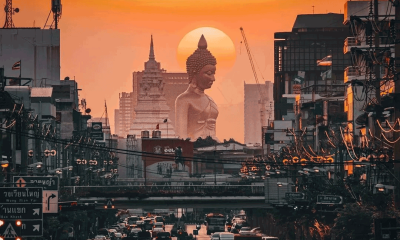
 Asia9 months ago
Asia9 months agoDiscover Bangkok: The Ultimate Travel Guide to Thailand’s Vibrant Capital
-

 Middle East9 months ago
Middle East9 months agoThe Ultimate Guide to Dubai : Exploring the Jewel of the UAE
-
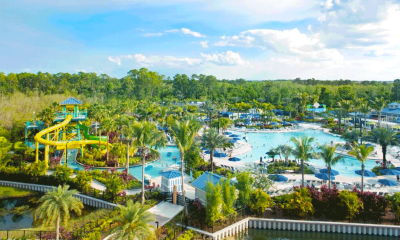
 Europe9 months ago
Europe9 months ago10 Must-Visit Family-Friendly Destinations for Unforgettable Adventures in 2024

